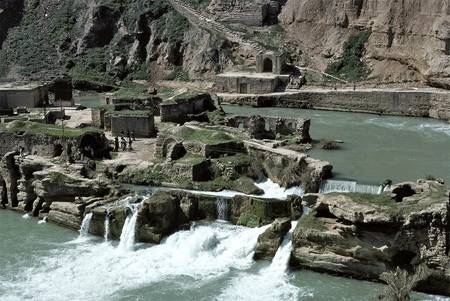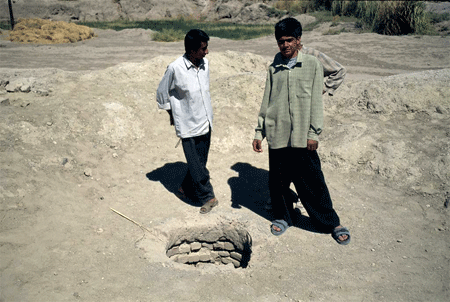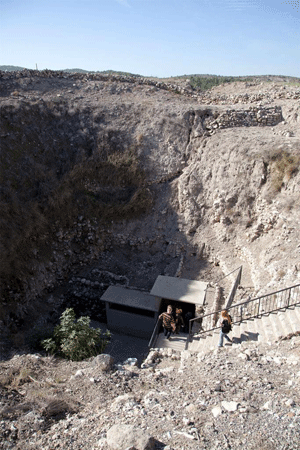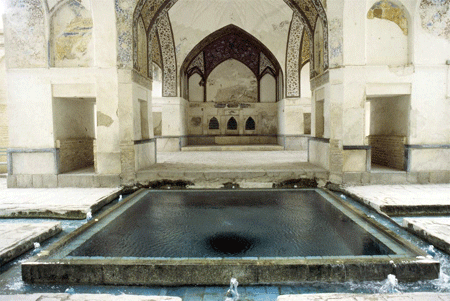Shushtar: A Town to Tame Water
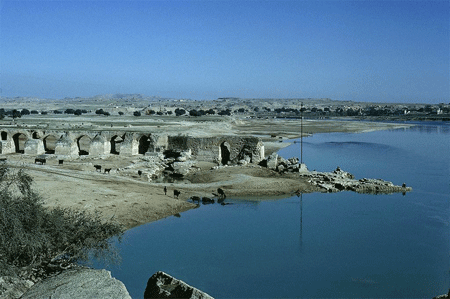
Ordered by Shapur I | Dam and Bridge at Shushtar; c. 260 | Image and original data provided by Sheila S. Blair and Jonathan M. Bloom
Peyvand Firouzeh, PhD Candidate, University of Cambridge
Aridity in the Islamic world stands in contrast to the well-known landscape architecture of Islamic gardens, where water is used generously and luxuriously. The contrast hints at creative methods of dealing with water scarcity: from man-made canals and reservoirs to cisterns and qanats (subterranean tunnel-wells), examples of which can be seen in my image group, “Water Management in the Islamic World.” These solutions not only responded to the scarcity of water, but also made efficient use of the water that was unusable or inaccessible for agricultural purposes.

Persian | City of Baghdad during a flood; 1468 |British Library | Image and original data provided by Erich Lessing Culture and Fine Arts Archives/ART RESOURCE, N.Y. ; www.artres.com
This article is an attempt at understanding Shushtar, a town in southwest Iran, by looking at the methods its inhabitants applied to tame water. Shushtar may be best known for its UNESCO-recorded site of Sassanid hydraulic system consisting of watermills that date back to the third century A.D. But this site is merely the tip of the iceberg. To fully understand its function and meaning, one should contextualize the site in a broader geographical view.
The desert climate in Shushtar has been moderated by the very existence of the River Karun, but this did not mean easy access to abundant water. The town is placed on a cliff on the soft rocky—and thus easily-eroded—plain of Khuzestan. The result: most of the rivers in the plain are located at a lower level than the towns. This issue has been addressed through a network of dams and bridges to store water and level it with farmlands, and to control the level of water in order to avoid possible destruction in the tunnels that conduct the water to the open area of waterfalls. The water also turns the wheels of about 50 watermills on its way to grind barley and wheat into flour.
How was the water issue in Shushtar architecturally translated into people’s everyday life? In residences and pious foundations, instead of changing the level of water, underground rooms were carved to reach the low level of water. This is where the inhabitants of Shushtar would spend most of their time, enjoying the cool air and access to drinkable water. As a result of such underground rooms underneath the courtyards, the vegetation was of a kind whose roots would grow horizontally rather than vertically.
- Water Supply | First water pipe built ca. 250 BC; additional water pipes built in the 2nd centuries BC | Pergamon, Turkey | Image and original data provided by Shmuel Magal, Sites and Photos
- Ordered by Shapur I | Dam and Bridge at Shushtar; c. 260 | Image and original data provided by Sheila S. Blair and Jonathan M. Bloom
- Opening for a Qanat | Bam, Iran | photograph: 1999 | Image and original data provided by Sheila S. Blair and Jonathan M. Bloom
- Water System | Constructed circa 900-700 BC | Megiddo Mound, Israel | Image and original data provided by Shmuel Magal, Sites and Photos
- Qanat | Saveh, Iran | photograph: 1999 | Image and original data provided by Sheila S. Blair and Jonathan M. Bloom
- Bagh-e Fin; Southwest Pavilion |pool fed by spring via a qanat (subterranean aquaduct) | photograph: 1997 | Islamic Art and Architecture Collection (Sheila Blair, Jonathan Bloom, Walter Denny)
The river was not only a resource for the inhabitants’ bare essentials, it was also an amenity. The banks of the river have always been a holiday resort. The rooms carved into the rocks on the river bank serve as a pleasant cool refuge during long summer days, with an attractive view to the river.
In understanding the architectural and urban meanings of Shushtar, one could focus on single examples of architecture such as the watermills. Instead, we tried to zoom out and use the theme of water to bring the seemingly scattered pictures of individual buildings together and to make a meaningful whole based on the self-conscious answers a civilization provided to a problematic geographical feature.

